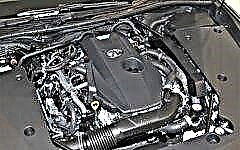

The content of the article:
- What is a pre-heater for?
- Functions of preheaters
- Application result
- Varieties of heaters
- Heater control options
When creating new car models, designers make sure that the cars serve for a long time and are highly reliable. High-quality full-fledged engine operation for decades is not a fantasy, modern cars have a very decent functional resource.
In order to ensure long-term operation, a device such as a preheater is provided. We will find out what is its use and how to choose the right model.
What is a pre-heater for?

As the name suggests, it is necessary to warm up the engine before it is fully loaded. Cold operation of the motor leads to the following undesirable situations:
- oil thickens in the cold, and the oil pump cannot cope with its supply in the required volumes;
- the lack of oil supplied to the motor leads to the fact that those parts of the engine, which should move in the lubricant, actually function "dry" and thus quickly wear out, becoming unusable;
- the air-fuel mix in the cold ignites more difficult and burns out more slowly;
- slow combustion of the air-fuel mix leads to burnout of the cylinder block gasket, pistons and engine valves.
As follows from the above list, starting the engine in the cold is not only difficult (the fuel mixture "does not want" to ignite), but also extremely destructive for the entire engine.
One of the ways to bring the car into working condition in the cold is to start the engine and hold it at idle for a while, thus warming up the engine to normal operating temperature. However, in this case, the problem is still not fully solved: engine wear increases even during idle operation if the car is started in cold weather.
Statistical data collected by automotive design bureaus show the following disappointing figures: during the initial start of the engine in a cold state, its wear increases ten (!) Times. It is believed that one cold start can be easily compared in terms of the load on the motor in terms of the degree of load and wear to a couple of months of operation of the machine under normal conditions at a stable temperature of +25 degrees.
It is in order to avoid the maximum number of negative phenomena and to save the engine resource that preheaters have been developed.
Let's make a reservation right away: in a climate where the daily temperature does not fall below +10 year-round, the need for this device disappears... It is also not required if you do not operate the car at all in winter. But in fact, the realities of our country are such that it is still not worth using a car without a preheater.
Functions of preheaters

This device is designed to set the required temperature for the operation of the car engine, so that even in cold weather, the operation of all systems is carried out without failure and without destroying the car parts.
The pioneers in the development and application of the heater were the countries of northern Scandinavia and Northern Europe, where the climatic conditions, albeit not as harsh as in our territory, nevertheless spoil the car owners a lot of nerves, forcing them to invent numerous ways to start the engine in the cold, avoiding at the same time damage to the engine.
A modern pre-heater performs the following functions:
- warms up the engine to operating temperature;
- makes starting the engine in cold weather easier;
- heats the car interior;
- heats the engine compartment, thereby increasing the temperature not only of the fuel in the engine, but also of other working fluids, as well as parts connected to the engine.
Application result

The use of a pre-heater leads to the following results:
- a tangible decrease in the degree of wear of engine parts during the winter period of vehicle operation;
- fuel economy;
- interior heating, elimination of ice on the windows by the time the driver gets behind the wheel;
- for diesel engines - the possibility of additional heating of the engine.
The main advantage of using this device is that the driver is guaranteed to start the engine and drive away, regardless of whether it is freezing or not.
Varieties of heaters

After we figured out the benefits of pre-heaters, it is time to pay attention to their variety and figure out how to choose the right model for you.
First of all, you need to understand that heaters are:
- for the car interior;
- for the engine;
- combined (heating both the engine and the car interior).
Let's consider the main types of heaters, their advantages and disadvantages.
Electric heaters
In fact, this is an analogue of a conventional boiler, which is built into the cylinder block. Its task is to warm up the coolant. The principle of operation is based on the fact that the warmer coolant rises upward, providing uniform heating of the entire volume of the liquid.
Electric heaters are in good demand in Europe, but not very popular in our country. The reason is simple: in Europe, almost every car park is equipped with electrical outlets, and the only question is whether the owner forgot to plug in the heater.
For our country, the use of an electric heater is relevant if the car is left overnight in a garage equipped with a power outlet.
If you opt for this type of heaters, it is best to choose a model with a temperature sensor. In this case, the system will automatically turn off when it reaches the set temperature level, and turn on again when the temperature drops.
There are also models equipped with an operation timer, but they are not as effective as they do not rely on temperature readings.
Air preheaters
Air heaters are of dependent and independent types. Dependent air preheaters are powered by a running engine. As a rule, an independent heater is only enough to heat the engine itself - it is not able to heat the interior of the car.
The design of the air heater is relatively simple. It consists of a radiator system filled with heated antifreeze and a fan that supplies heated air. This device heats up the air in the passenger compartment very quickly. In modern models, the temperature is maintained using a temperature sensor.
Autonomous air heater

The scheme of this type of heaters includes an autonomous engine that pumps fuel into the combustion chamber, which is mixed with air and ignited by a spark plug. Such a heater uses from 0.25 to 0.5 liters of fuel per hour of operation, depending on the outside temperature and the size of the heated area.
Engine preheater built into the cooling system
The principle of operation of this heater is very similar to that of a stand-alone air heater. The fuel ignites, the heat exchanger heats the coolant.
One of the important issues when choosing the type of heater is its location. If the heater is to be installed under the hood of a car, one should start by analyzing: is there any free space? Not all car models allow you to squeeze at least something extra under the hood.
Modern heater manufacturers have launched a serious struggle to miniaturize their devices. However, it is not worthwhile to run on very miniature models: they have less power, and in our climate this can be a waste of money.
Heater control options

The most common option, from which, in fact, the production of pre-starting heaters began, is a manually controlled unit. That is, before starting the engine, you need to manually activate the heater. In five to ten minutes, the engine will warm up, and the cabin will become warm.
Also available in models equipped with a timer. If the owner of the car drives it out at the same time, you can set the timer to start and not worry anymore: by the right moment everything will be warmed up, all you have to do is get behind the wheel and start on the road.
Another option is remote controlled heaters. The disadvantage of such a model is in the small range of the signal transmitter. The declared one kilometer radius in urban environments is greatly reduced due to the density of buildings and poor signal transmission.
Summing up the above information, we can say the following:
- A preheater in our latitudes is a necessary thing.
- If you have access to power, electrical models will solve the problem perfectly.
- If the car's access to electricity is problematic, it is better to opt for an autonomous heater built into the cooling system.
The use of a pre-heater will allow the car to do much longer without expensive engine repairs.











